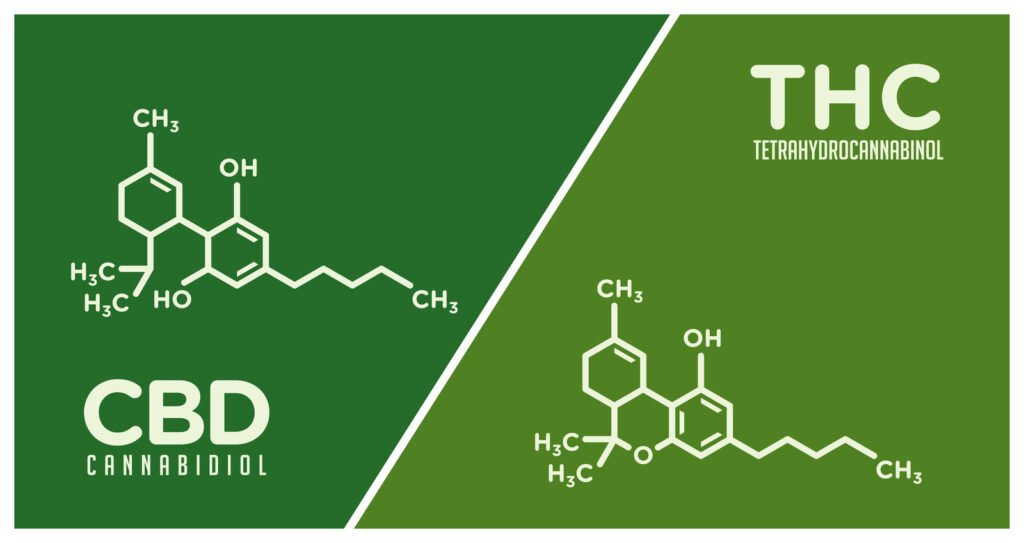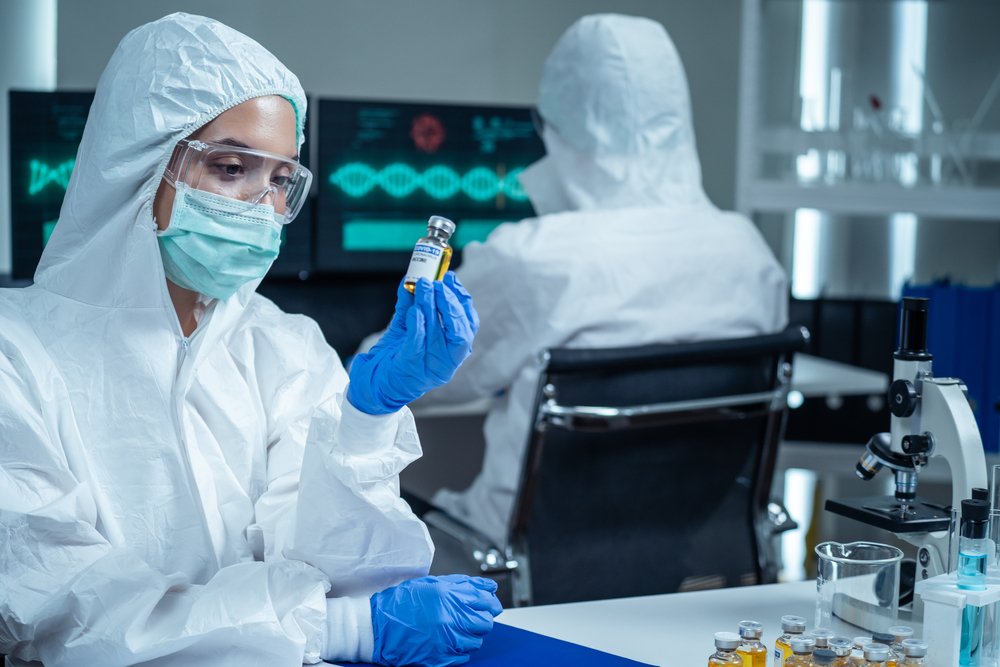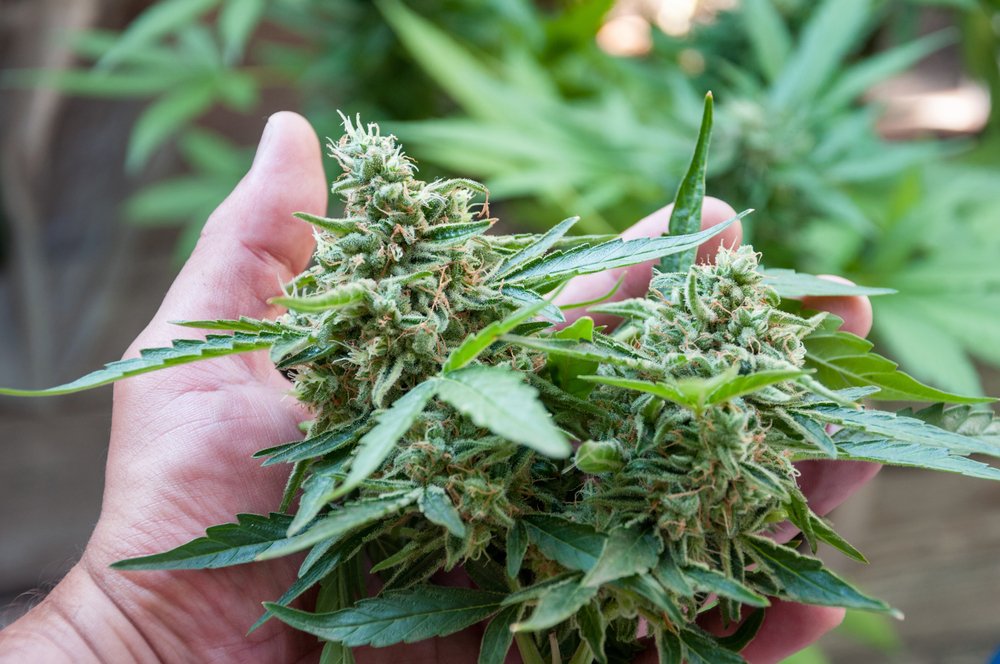Have you seen a post from Forbes making the rounds of social media about a study from the Journal of Natural Products that suggests hemp compounds could be an effective tool to treat and prevent the coronavirus? As much as I’d love to see the President hang the Medal of Freedom around a big old Bubba Kush cola, we figured we should provide some perspective and context around this report. It is an exciting development for sure, and boy, wouldn’t it be cool to feel something like hope again? But there’s been far too much disinformation about this disease already, so let’s go ahead and nip some of these ideas in the bud, starting with “No, smoking cannabis isn’t going to prevent you from getting Covid.” Why not?
Oregon State University Hemp Study Explained
The study, Cannabinoids Block Cellular Entry of SARS-Cov-2 and the Emerging Variants was a joint effort by Oregon State’s Hemp Innovation Center, the Linus Pauling Institute, and Oregon Health & Science University led by Richard Van Breeman that was published on January 10th, 2022. Essentially, this team attempted to use a variety of plant compounds to see if they would stick to the SARS-CoV-2 spike protein. Introducing a molecule that binds to a viral ‘spike protein’ is a method of preventing viral infection that has been trialed with diseases like HIV over the past several decades. Once they found that cannabinoid acids CBDa, THCa, and CBGa stick themselves onto the spike protein, the next step was to observe whether that would prevent the spike protein from entering a human cell. To do this, they mixed the hemp-bound spike protein together with human ‘epithelial’ cells, which refers to the layer of cells that protects all our tissues and organs, like our skin, but also the insides of our stomach, etc.
How Does Cannabidiol Protect Cells from Infection by Covid-19 Virus?
As the team expected, Covid-19’s spike proteins were unable to enter the human cells because of the clunky, meddling hemp molecule that stuck itself right onto their binding sites. To put it another way- it’s the difference between sitting on a cactus and sitting on a pot that you put over the cactus first. And that’s how this study suggests cannabis compounds could protect against Covid infection! It’s not a perfect analogy, I’ll grant you, but I’m not a scientist, just a guy that spends his weekends watching YouTube videos of people falling into cactuses like, presumably, everyone else.

The Potential of Hemp Compounds in Perspective
This doesn’t prove that a human can ingest CBDa, CBGa, and THCa as a surefire way of preventing Covid-19, but it does suggest some potential to use these compounds in lowering the risk of infection from covid. Simply put, this study was done in a laboratory setting, with cells in the equivalent of a petri dish. That’s called an ‘in vitro’ study (meaning ‘in glass’) because even though they used live human cells, the experiment wasn’t conducted inside a living organism (that’s called ‘en vivo’).
In order to draw conclusions about whether CBDa, CBGa, and THCa could be used effectively as treatment or preventative measure for Covid-19, the research would have to take another very expensive step and actually administer CBDa and CBGa to patients in a clinical setting that’s able to control for some of the many, many variables that come into play when viruses try to replicate in a human host. Demonstrating success in that sort of clinical study is the only way it could become an FDA-approved treatment, so it’s gonna be a long time before your health insurance recommends taking hemp compounds for Covid-19.
On a positive note, the researchers theorize that these cannabinoids could be useful not only for the existing Coronavirus variants, but for emerging future variants as well!

What are the different types of cannabis compounds?
First of all, cannabis and hemp are the same plant, so we’re using them interchangeably in this article. It used to be common to call cannabis with THC ‘marijuana’ and cannabis without it ‘hemp’, and while that’s the legal definition we’re stuck with, cannabis breeders have had all sorts of fun and blurred the lines so that we can get different blends of cannabis compounds in the same plant. Unless you need the THC, producing medicinal cannabinoids on hemp plants without THC makes a lot more sense because there’s less laws and taxes that drive up the price. But what are we talking about when we refer to the THC, CBD, and CBG used in this study?
Basically, CBG is a precursor to THC, CBD, and most of the other cannabinoids. That means that when younger plants first produce their trichomes, they start by filling them with CBG but not THC or CBD. As the plants mature, enzymes inside those trichomes (such as THC synthase) start converting the CBG into other cannabinoids. For a while CBG was largely ignored by researchers, but once it was discovered to have some unique properties, especially on bone and brain tissues, cannabis growers and researchers took great interest in CBG. They quickly learned they could harvest their plants earlier to retain a higher CBG content, but they’ve also started breeding and experimenting with ways to stop cannabis plants from producing the enzymes that convert CBG to other cannabinoids. That way they can grow big, high-yielding plants full of nothing but CBG!

When it comes to CBD and THC, you might be a lot more familiar with their stories. Many dispensaries carry 1:1 products with equal amounts of THC and CBD, or any number of other ratios ranging from THC-dominant to CBD-dominant. When it comes to this new study, we need to very clear on something: the research was focused on the acidic forms of CBD, CBG, and THC, called CBD-A, CBG-A, and THC-A (or CBDa, CBGa, and THCa).
Smoking Weed Alters Its Compounds
The kicker here is that this study examined CBDa, CBGa, and THCa, the acid or ‘raw’ forms of CBD, CBG, THC. If you’ve heard of decarboxylating your cannabis material (“decarbing”), that’s referring to a process that releases the ‘carboxylic acid’ attached to your cannabinoids. When that happens, you end up with ‘activated’ cannabinoids which can be inhaled, ingested, or used topically. When you have fresh or well-stored plant material, most of the cannabinoids will be present in the acid form that they used in this study.
When you smoke, vaporize, or bake your cannabis for ingestion, however, the cannabinoids turn into the ‘freebase’ or ‘activated’ forms that get us high, so they are no longer in their acidic structure. If you’re one of the few people out there juicing raw cannabis for nutrition, well damn, keep it up! For the rest of us, this study does not mean we might have been keeping ourselves safe with a favorite pastime, especially if we’re using THC dominant weed instead of CBD or CBG dominant strains.
However, if you’re interested in ways to ingest the cannabinoids in acid form and you can’t find or afford a supply of raw cannabis that doesn’t even get you high, there’s some tinctures and other products that contain CBDa and CBGa (more info below). Keeping in mind that clinical research has yet to establish how effective this actually may be and it probably can’t hurt to try, you should definitely consult a doctor first.

More Studies Exploring Hemp Compounds for SARS-Cov-2
This isn’t even the first study to support the hypothesis that hemp compounds could help us combat the ongoing pandemic (now available in Delta and Omicron flavors!). This latest study was one of the first to highlight the potential of CBG, but many earlier studies have suggested that cannabinoids could play a role in fighting SARS-Cov-2, including this study highlighting CBD and THC, and this one that focused solely on CBD. Why the first studies garnered little attention and this new one is constantly interrupting me from scrolling through my feed of thirst traps, we can only posit a guess.
The researchers at Oregon State University did show something fairly new, however: they showed that cannabinoid molecules could directly prevent Covid-19 infection by attaching to spike proteins. That’s a bit different from earlier research, which mostly explored how the anti-inflammatory properties of cannabinoids can alter other processes that indirectly achieve the same goal of preventing infection, or reducing replication after infection takes place. As early as 2019, CBD was being investigated for its potential to mitigate Covid-19 by inhibiting or downregulating ACE2 receptors- which is a mouthful- but it’s one of the mechanisms researchers identified for preventing SARS-CoV infection (remember the first one?). A lot of this research built upon knowledge from the first SARS-CoV pandemic, but even before then, interest in plants as antiviral compounds goes back many decades, with thousands of similar studies that have paved the way for researchers to explore some of the antiviral properties of our favorite plant.
So if things like licorice, cloves, oregano, and other plants can do the same thing, why focus on hemp plants? I mean, you’ve seen how much they charge for CBD products, right?
Many Plants Possess Anti-Viral Properties
The real reason to be excited about cannabis’ potential here is not solely that it possesses anti-viral properties, lots of plants do that. Researchers have been looking into thousands of other sungrown compounds for treating Covid-19 in much the same way. One study looked at over 2000 natural flavonoid compounds such as the curcumin found in turmeric, and ‘Taiwanhomoflavone A’, whatever that is! If you look into it, almost any herb you can think of has shown potential to help fight off viruses in one way or another, including oregano, cloves, rosemary, thyme, and so on. In a lot of cases, researchers want to identify molecules that can be synthetically produced because growing plants takes up space and my grandma would probably have a fit if we told her to start rationing her spice cabinet.
Truth is, there’s plenty of good reasons to start thinking about naturally available compounds, and the potential here is in how much medicine is produced by the hemp plant as opposed to other flora. Approximately one third of a weed plant’s biomass can contain these valuable phytocannabinoids, which means we could grow a lot of medicine quickly without making grandma give up her community garden plot. Wait, I thought weed had “no medical purpose?” Hey, if weed saves the world from the pandemic, can we get it removed from Schedule 1? Asking for several million friends.
The other significant reason these studies are exciting is that, as you probably know, cannabis is safe for human consumption, even in large doses, and producing new synthetic compounds often results in a long list of creepy side effects. Anal fissures, anyone? Anyone?

How to Find & Use CBDa and CBGa
So, first you’re going to need to find CBDa and CBGa. The first is fairly common, but the second is not. Imagine if we had spent the last hundred years studying this plant instead of demonizing it, huh?
One source for raw leaves is Ziese Farms. They sell cannabis leaves for juicing, and since these products are under the federal .03% THC limit, they’re classified as hemp and legal to order. That being said, they aren’t cheap and their cannabinoid concentrations are low compared to flowers and so-called sugar leaves! You could also try buying hemp flower that contains CBD and CBG from a supplier such as Mission Lago Farms. For several hundred dollars, you can order a pound of premium hemp flower for processing. There’s also plenty of tinctures for acid form cannabinoids available online, but we haven’t used or tested any ourselves so we’re going to withhold recommendations until we do so.
One thing to note here is that as this study gains traction, it seems inevitable that some shady folks will start selling products that they say contain CBDa or CBGa, but you don’t need to call Maury Povich to determine whether that’s a lie. Reputable CBD and hemp stores will furnish verifiable Certificates of Analysis from real labs to customers upon request. You should do so, and if the shop can’t, you should probably steer clear.
Once you’re sure that your cannabis actually has CBDa or CBDa, here’s some ways to ingest hemp extracts suggested by noted endocannabinoid expert Dr. Rachael M. Knox on Instagram:
– Eating or juicing raw cannabis leaves or flower
– Brewing cannabis tea, steeping for 3-5 min
– CBGA and/or CBDA tinctures or capsules
– CBGA and/or CBDA suppositories
– Vaping dried flower at no higher than 230F
Weed is Not a Substitute for Vaccines!
Hey, we are well aware that Covid is a political hot button. How could it not be after upending our lives for almost two whole years? I don’t have any interest debating anyone on the internet about anything other than weed and the best cactus accident videos on YouTube. That being said, it would be irresponsible of us not to point out that nothing in this article or the studies we’ve discussed suggest in any way, shape, or form that you should consider substituting weed for vaccination! Let’s fast-track the research on a hemp-based solution and add it to the toolbox if the people we pay to be smart say it’ll help get us the hell out of this mess sooner. If you want to get the jump on that and start juicing hemp leaves before we’ve even moved to trials on real people, more power to you. It might not prevent Covid, but if the downside is you see a modest boost to your overall health, that’s not too shabby.
